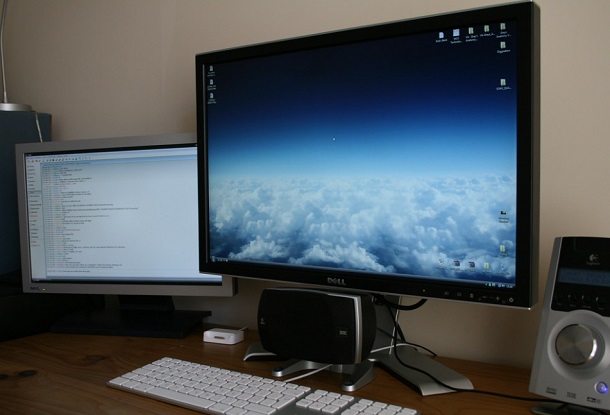Computer Monitor - Analysis and Buying Guide - 2022
A monitor is one of the most important components of any computer setup. Whether you're an occasional user, a home pro, or a hardcore gamer, you'll probably be using your monitor every day, so it's worth spending time choosing the right one. Selecting the right monitor is a careful balancing act between ideal screen size, resolution, feature set, and cost.
At Real Indian, we buy all the products we review with our own money, and we never accept products or financial incentives from product manufacturers. We are passionate about providing our readers with clear and unbiased reviews so they can make informed purchasing decisions. We are here to help you find the best monitor for your needs. If you're ready to buy, check out our five recommendations in the table above. Or, if you want more information on how to compare the different monitors available, read on for our full buying guide.
A Wide Variety of Options
While most computer monitors are built around the industry-standard 16 x 9 widescreen format (the same dimensions as most TVs), there's also a new kid in town: “ultra- width” monitors. Featuring 21 x 9 panels, ultra-wide monitors were built with gamers and office workers in mind: with an especially wide desktop, gaming landscapes seem especially vast, and for business, they can be compared several documents side by side. The choice you make should be based on how many displays you need, and how you primarily use your computer.
Widescreen monitors are the most common, which also makes them the most affordable. A 16 x 9 screen is perfect for watching movies and TV, and in most cases, doesn't require the user to turn in any direction to see the full screen. Widescreen monitors are also a big step up in quality from the 4 x 3 (“full screen”) monitors of yesteryear.
Ultra-wide monitors have more pixels than widescreen monitors, and are ideal for users who frequently find themselves running out of space on a standard monitor. Gamers often consider ultra-wides an essential part of their gaming rigs, and it's easy to see why: with room for more game backgrounds and artwork, any game becomes an immersive ultra-wide experience. -wide. Professionals who spend time working on multiple documents, spreadsheets, or presentations love the room so they can stretch their digital assets on ultra-wide monitors and view them all at once.
Find a Resolution
Computer monitors come in a variety of resolutions — that is, the number of pixels they can display, expressed as height times width — with a current maximum of 3840x2160, also known as 4K. And while more pixels means more detail, choosing the best screen resolution for yourself can be more difficult than expected, because high-resolution screens can make text smaller and harder to read, depending on the size of the screen. screen.
It's also important to avoid confusing screen resolution with screen size: a 24” resolution monitor will make text look tiny and hard to read, while a 32” monitor will make text look tiny and hard to read. with a resolution of only 1920x1080 it could make images and text look painfully blurry. Fortunately, there are a variety of resolutions and screen sizes, so there's a perfect monitor for everyone.
The most common resolutions for computer monitors are 1920x1080 (also known as Full High Definition, or UXGA), 2560x1440 (WQXGA), and 3840x2160 (also known as 4K, or UHD).
Ports
When buying a new monitor, it's important to know what ports are needed. There are three main ways to connect a computer to a monitor, and not all monitors support all connection types. The three types are:
- HDMI :
High-Definition Multimedia Interface, or HDMI for short, is the standard for digital video connection cables and ports. HDMI cables are cheap and can carry audio and video simultaneously. HDMI is such a ubiquitous standard that it can even be used to connect your gaming consoles or Blu-ray players to your monitor's HDMI port, if you have one.
- DisplayPort :
A video-only competitor to HDMI, DisplayPort connects digital video signals to monitors, and is most commonly found on Apple computers. DisplayPort cables can be used to chain monitors together, giving it an advantage over HDMI in multi-monitor setups.
- VGA :
VGA is the analog video standard still required by older computers. Although VGA lacks the crisp digital precision of HDMI or DisplayPort, it's still a perfectly capable connection type.
Tips
As you decide which computer monitor to buy, consider the following tips:
If you need additional USB ports in your computer setup, look for a monitor with a built-in USB hub. Some monitors include up to four additional USB ports hidden out of sight.
If you're not sure what size screen to buy, use a tape measure to estimate the ideal and available space on your desk. Remember that monitor screen measurements reflect the diagonal distance between opposite corners.
When setting up a monitor for the first time, use the built-in calibration settings to adjust the image on the screen. Proper setup based on the included instructions can significantly improve the overall image quality of your monitor.
Read More :

